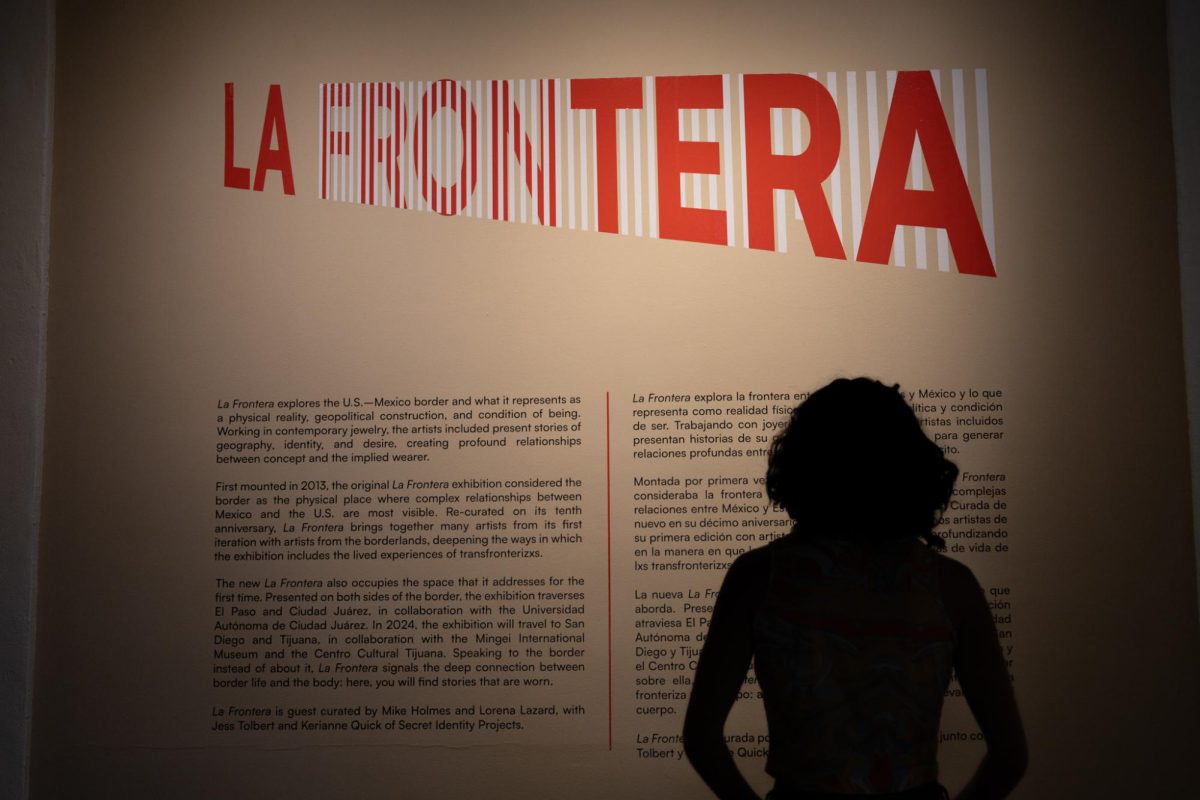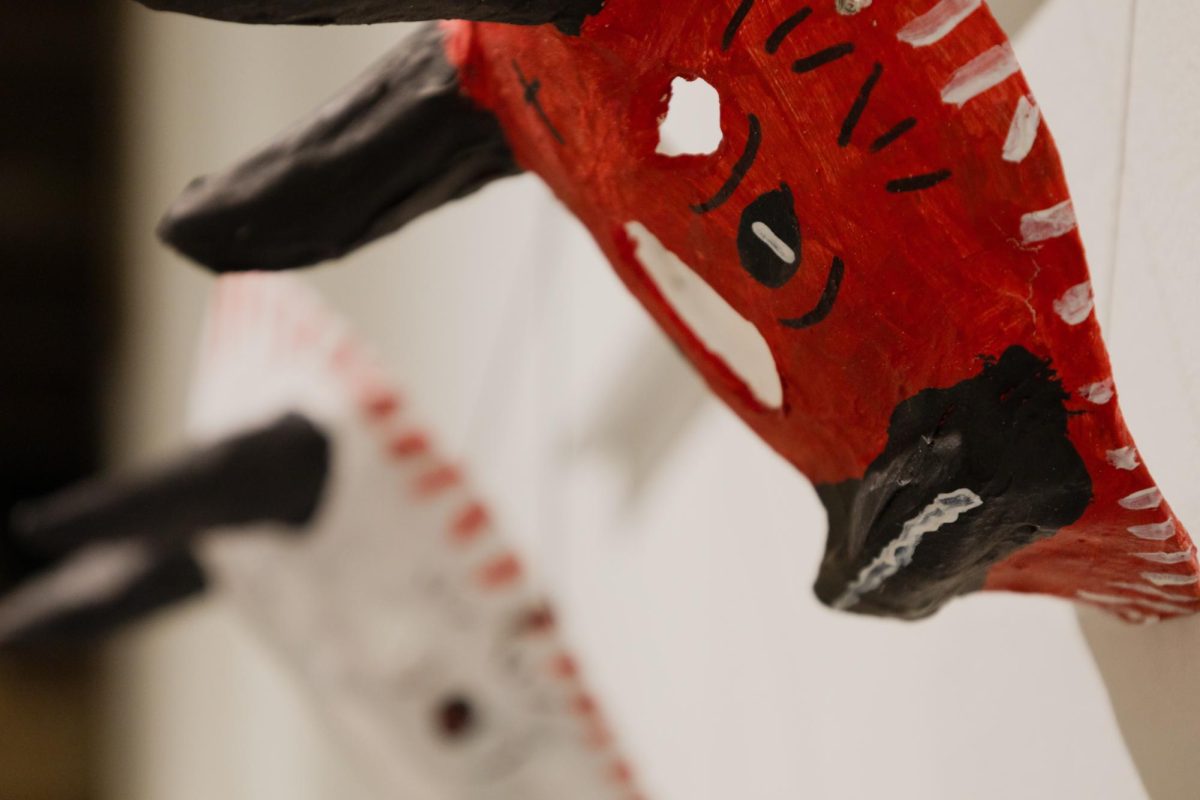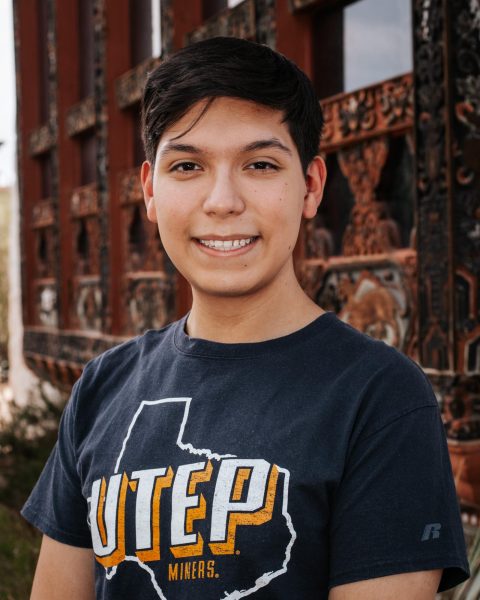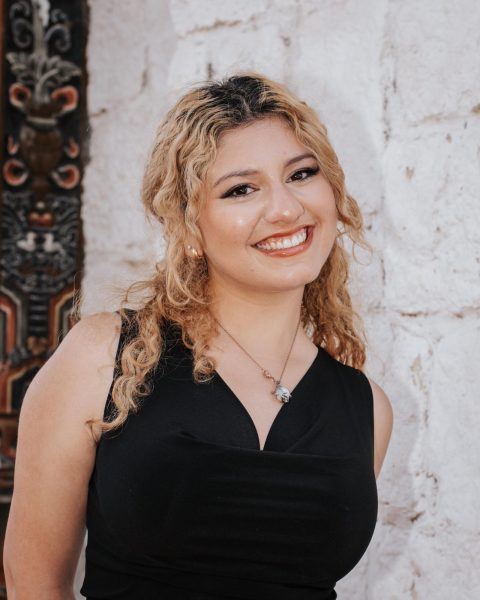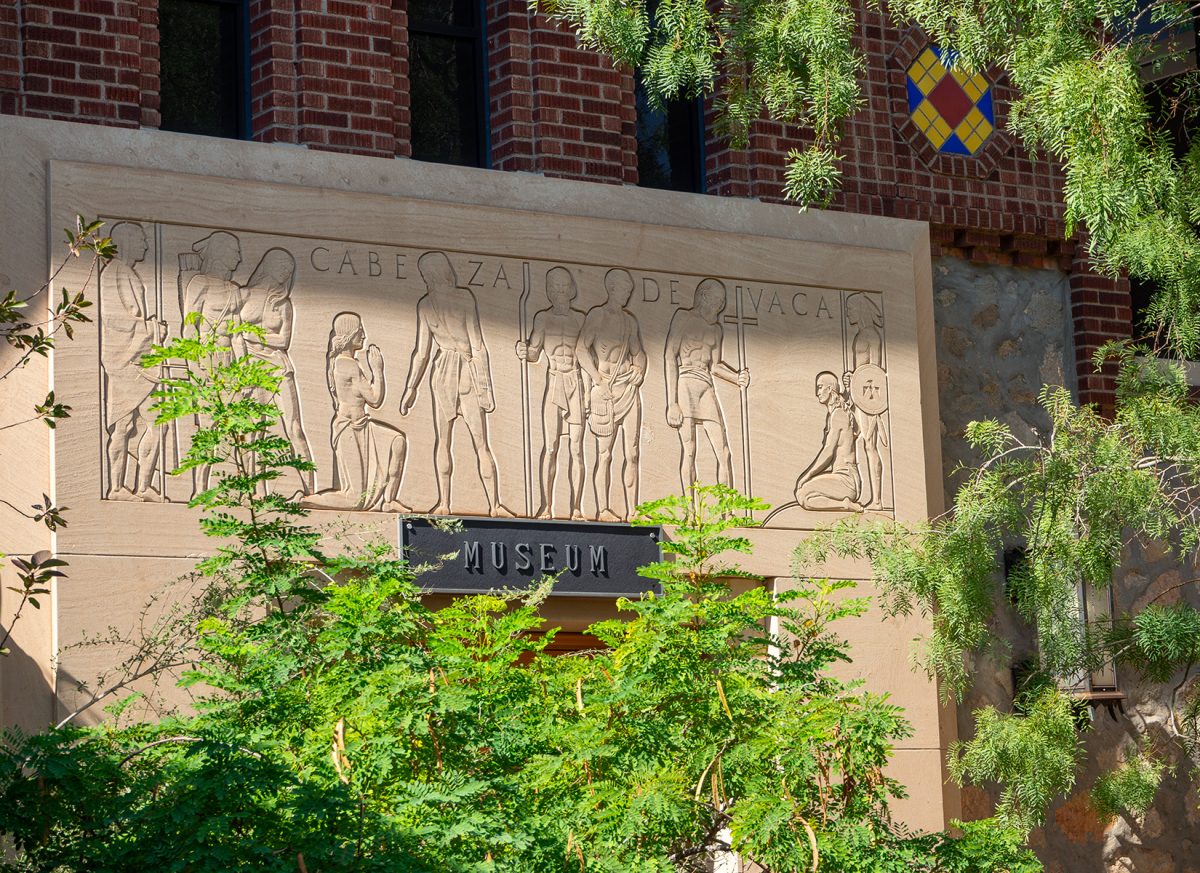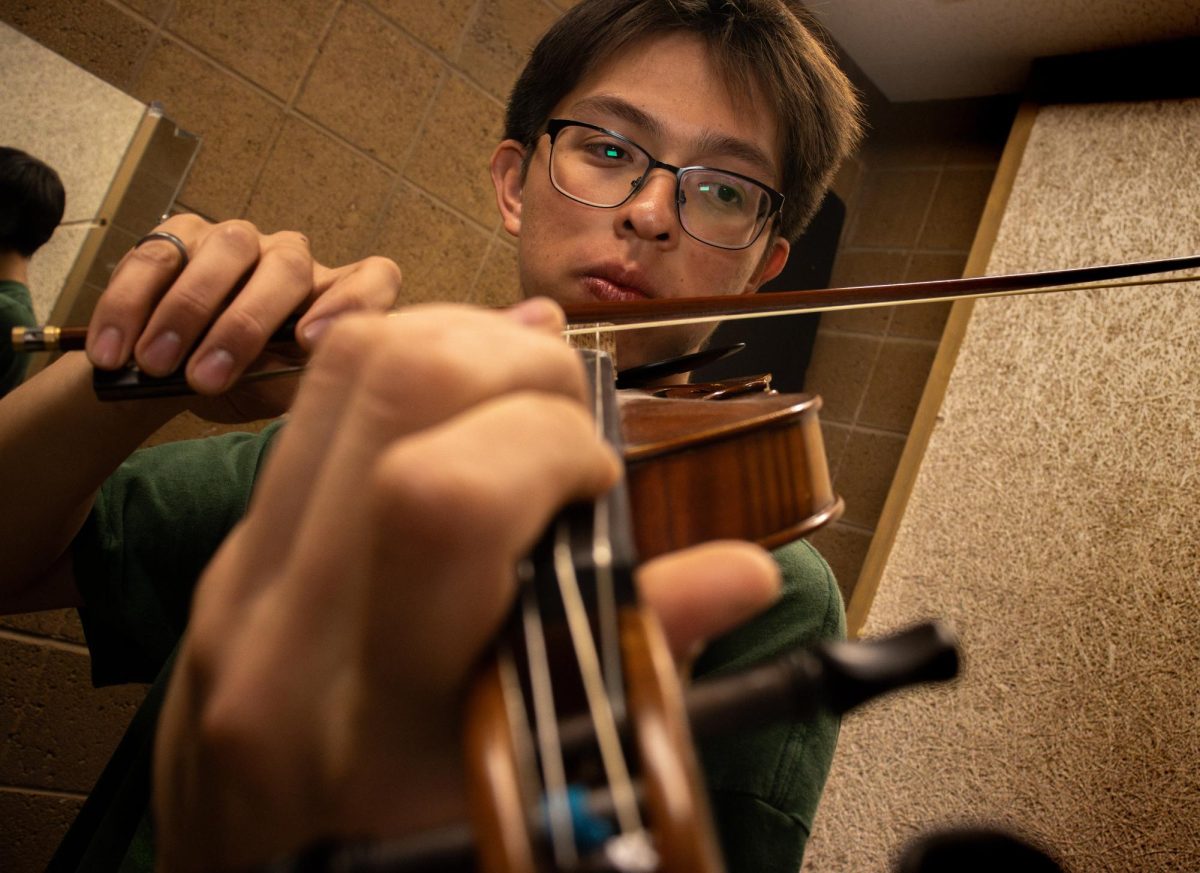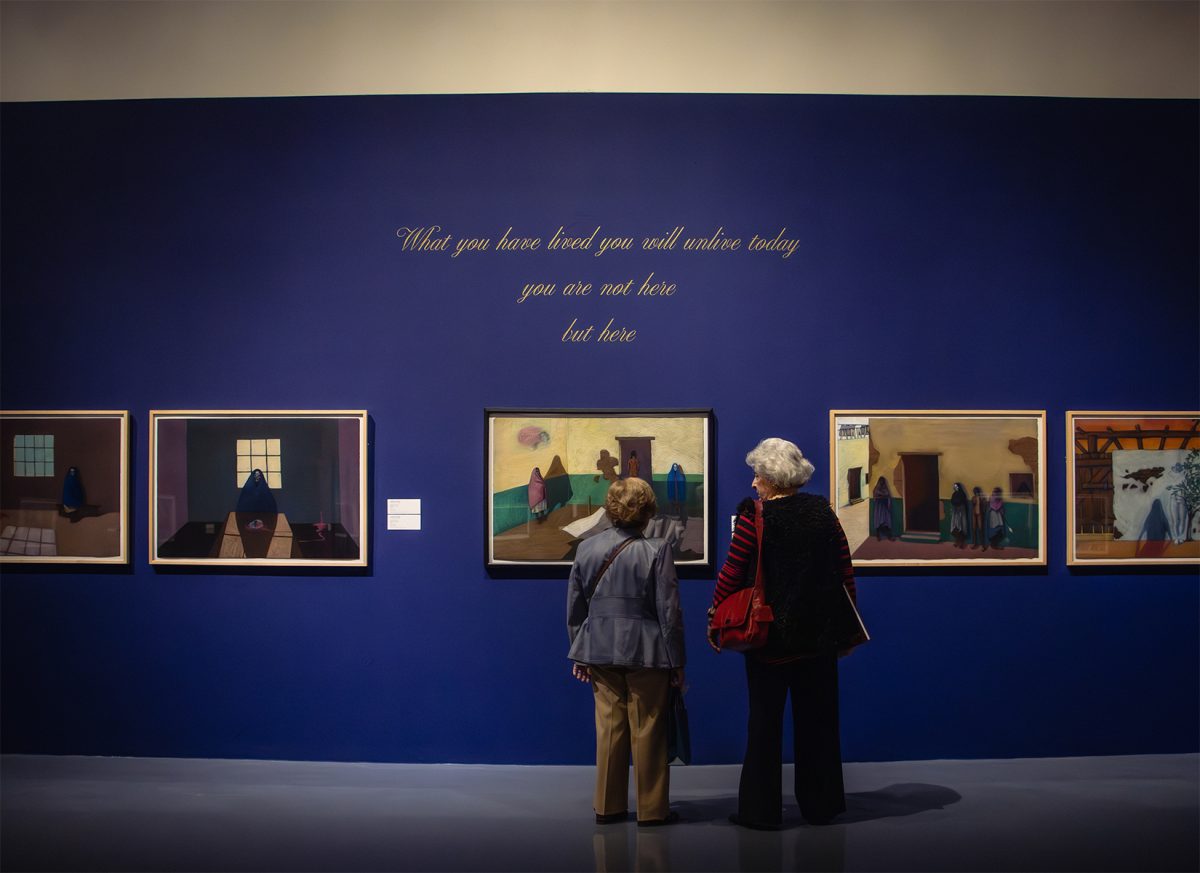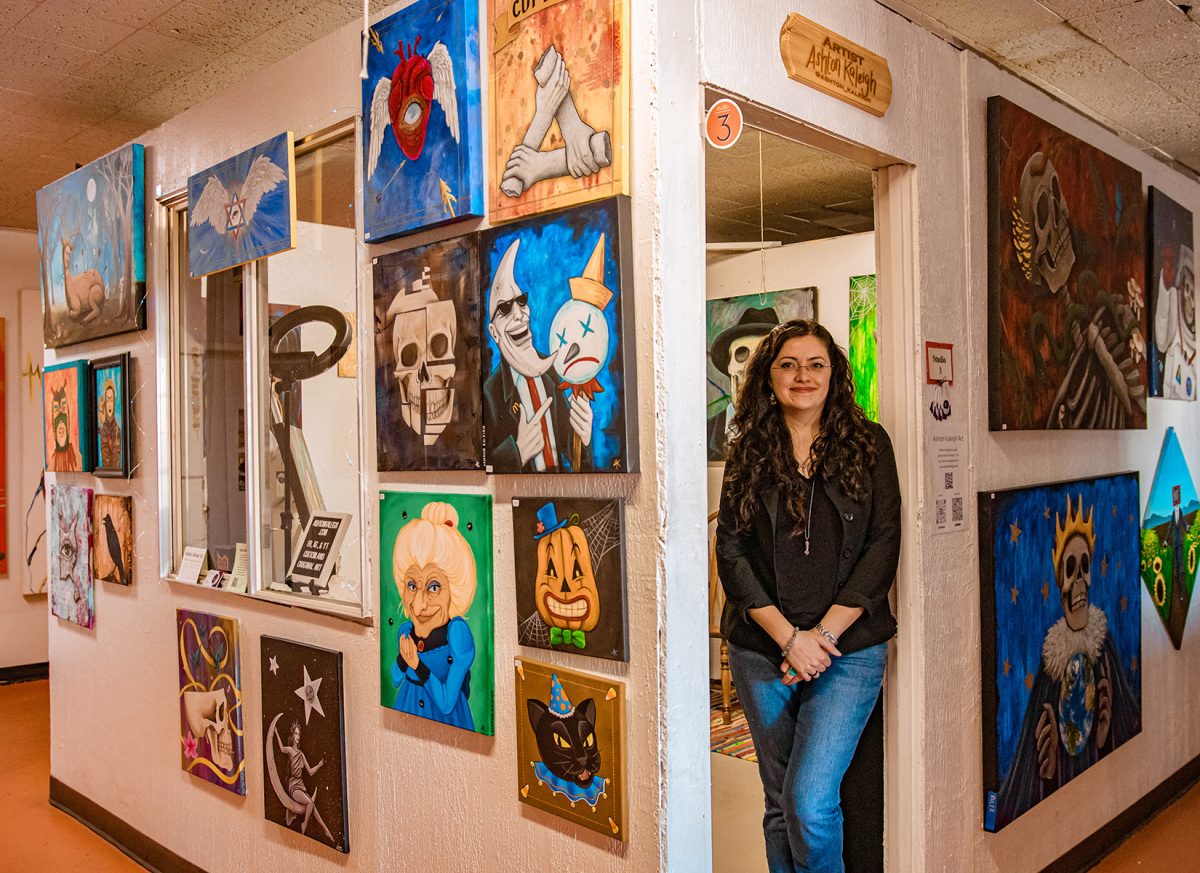A mannequin dressed in a half-buttoned flannel shirt, adorned with gold chains hanging from a cap with “Chuco” spread across the front stands beside a tapestry woven across the Rio Grande. From clothes to jewelry to metal, the art at the Rubin Center’s latest exhibition, “La Frontera” showcased pieces reminiscent of culture on the Mexican-American border.
With its first reception starting a decade ago, “La Frontera” began as a collaboration between two curators, one from the U.S. and one from Mexico who wanted to highlight life on the border. While there was a variety of artists for the show, many were not from the border.
“This new show has I think, 25 artists who are from El Paso and Juarez, but also artists from other places on the border,” said Kerry Doyle, Director of the Rubin Center. “It’s not just bringing in border voices, but it’s also connecting the students on either side of the border so that they can kind of get to know each other (and) make work together.”
Pieces in the exhibition decorated the walls, while others were placed on an assortment of tables that divided the space, like a border. While the theme of the show is identity and experience from growing up on the border, much of the artwork leaves the viewer trying to figure out the meaning. One such piece is made from concrete by Alejandro “Alex” Arrioja, a UTEP alum who majored in metal smithing and graphic design.
“The main idea behind this piece is the expectations as a Mexican American or first-generation American child, to be the one to take your family out of whatever poverty or socioeconomic situation that you’re in,” Arrioja said. “All that stuff weighs on you because you feel that expectation from not just your parents but the other family members.”
With many materials at their disposal, artists were able to create whatever they wanted. Although the show is a jewelry exhibition, many of the pieces also work with textiles and other things. Through this variety, the artists were able to represent their experiences and show them to people who share them.
“I exist in a place between two cities, two countries, two languages, and more than two million people,” said Cassandra Adame in an artist statement for the exhibition.” Observing this as a unique situation, I pull inspiration from my sense of home and place. Like a story or image, jewelry creates a conversation with its user/wearer, and this interaction is an important bridge between understanding and reflecting on shared experiences we may have. Like a souvenir, my jewelry is a portrait of a city you can carry with you.”
The exhibition will be open for the rest of the fall semester until Dec. 15. Until then, visitors are free to visit the exhibition. For any more information, those interested can visit the Rubin Center’s website. In Juarez, the second part of the exhibition will open, allowing more people to visit the artwork.
“I think that’s why it’s important to bring something that’s about this place to (the Rubin Center) and showcase it alongside artists that represent it,” said Jess Tolbert, assistant professor of art and head of UTEP’s Jewelry and Arts program.“Not just a metaphoric in a distant way, but in a real true lived (way).”
Elisha Nunez is a staff reporter and can be reached at [email protected]

